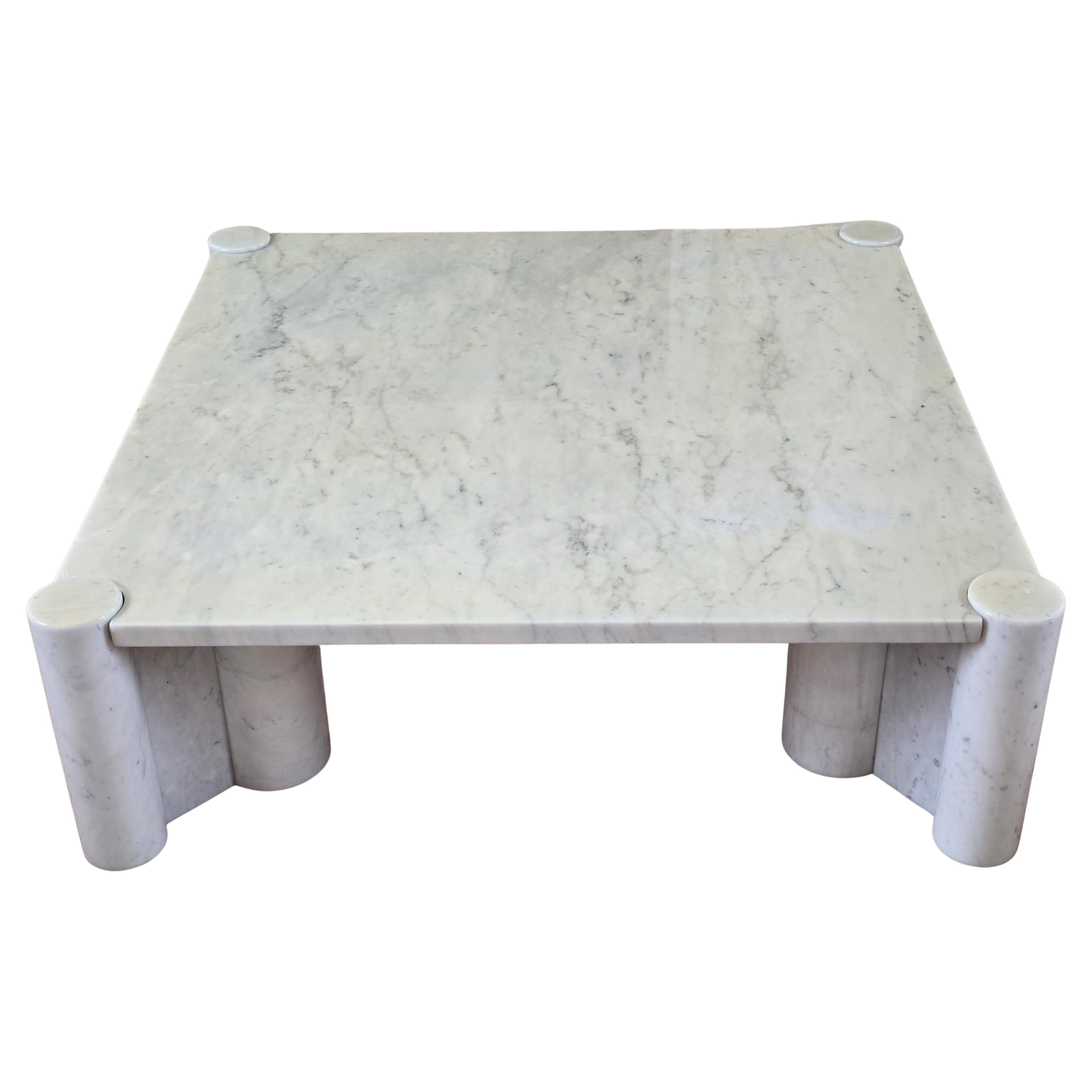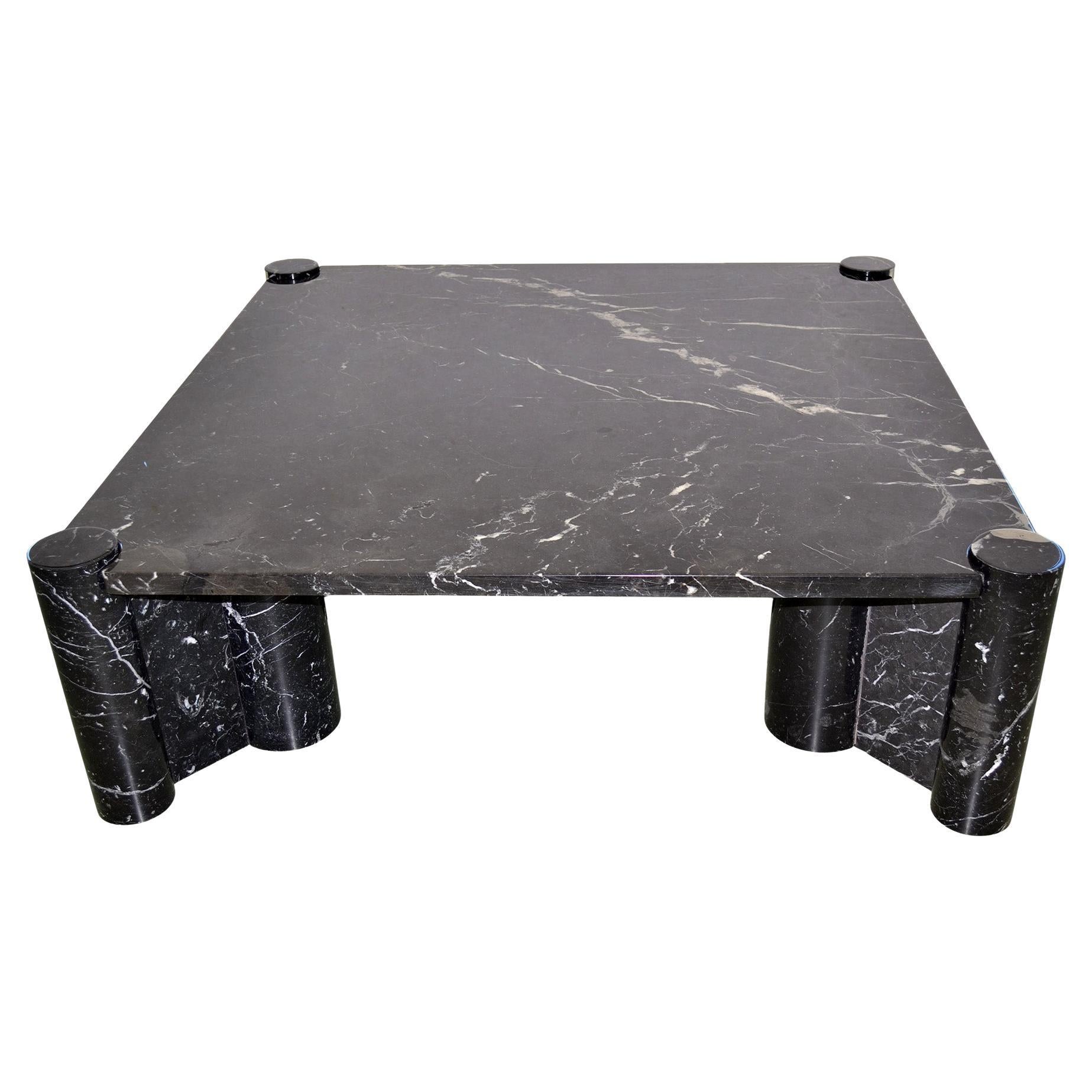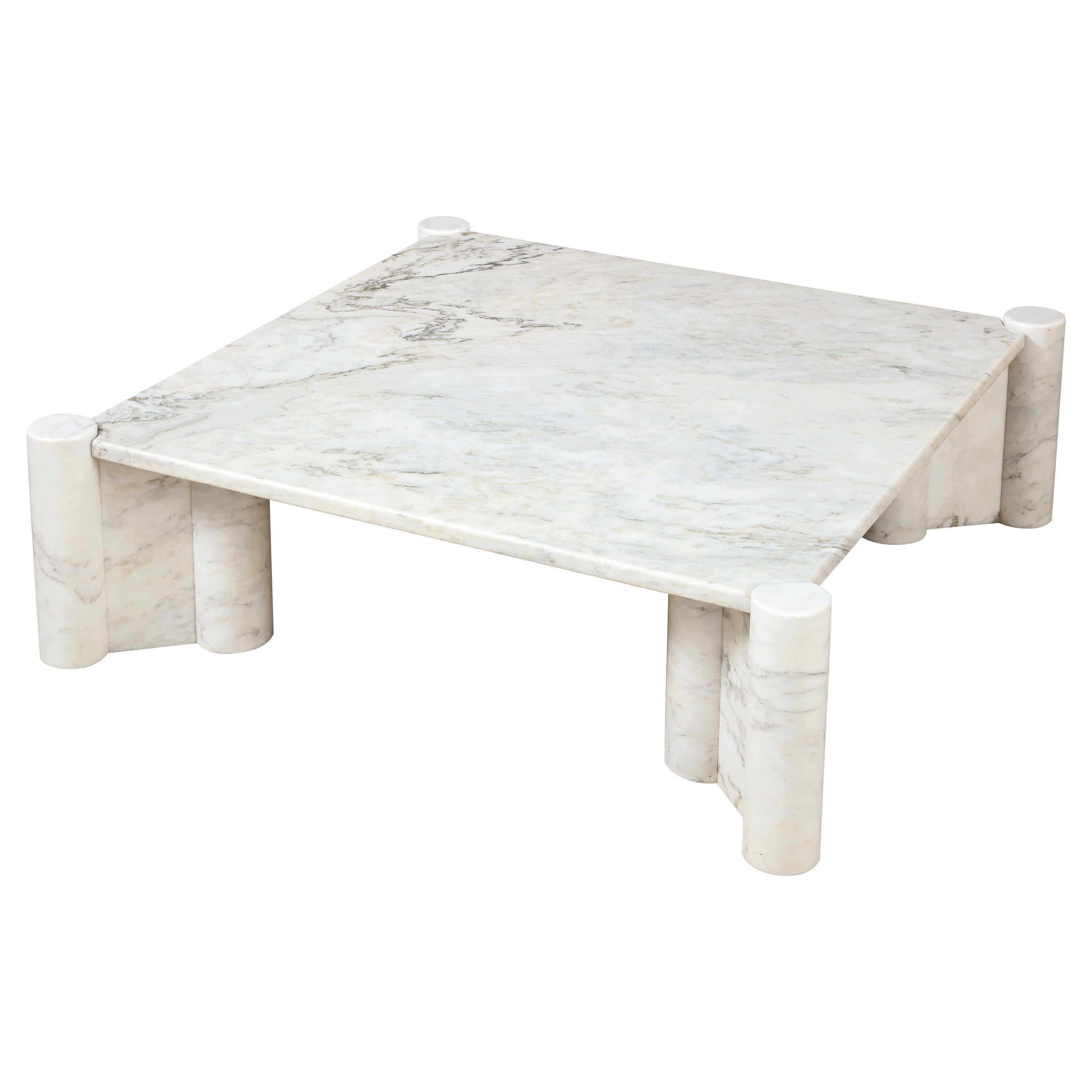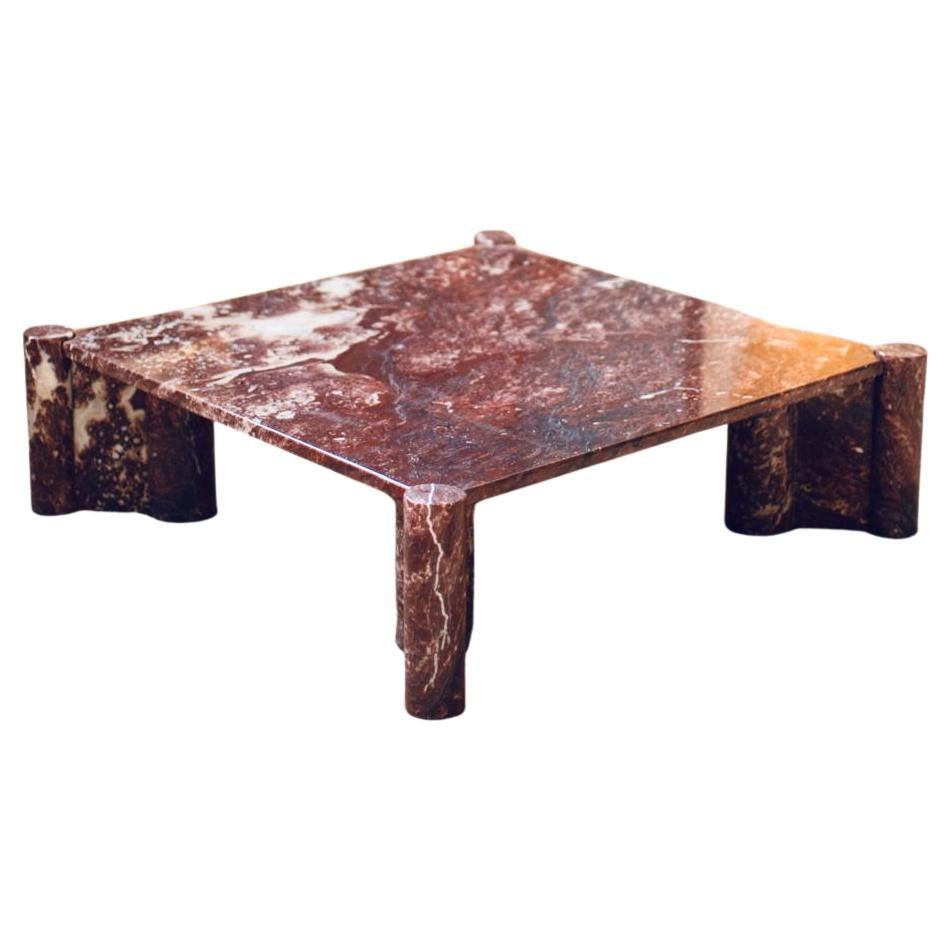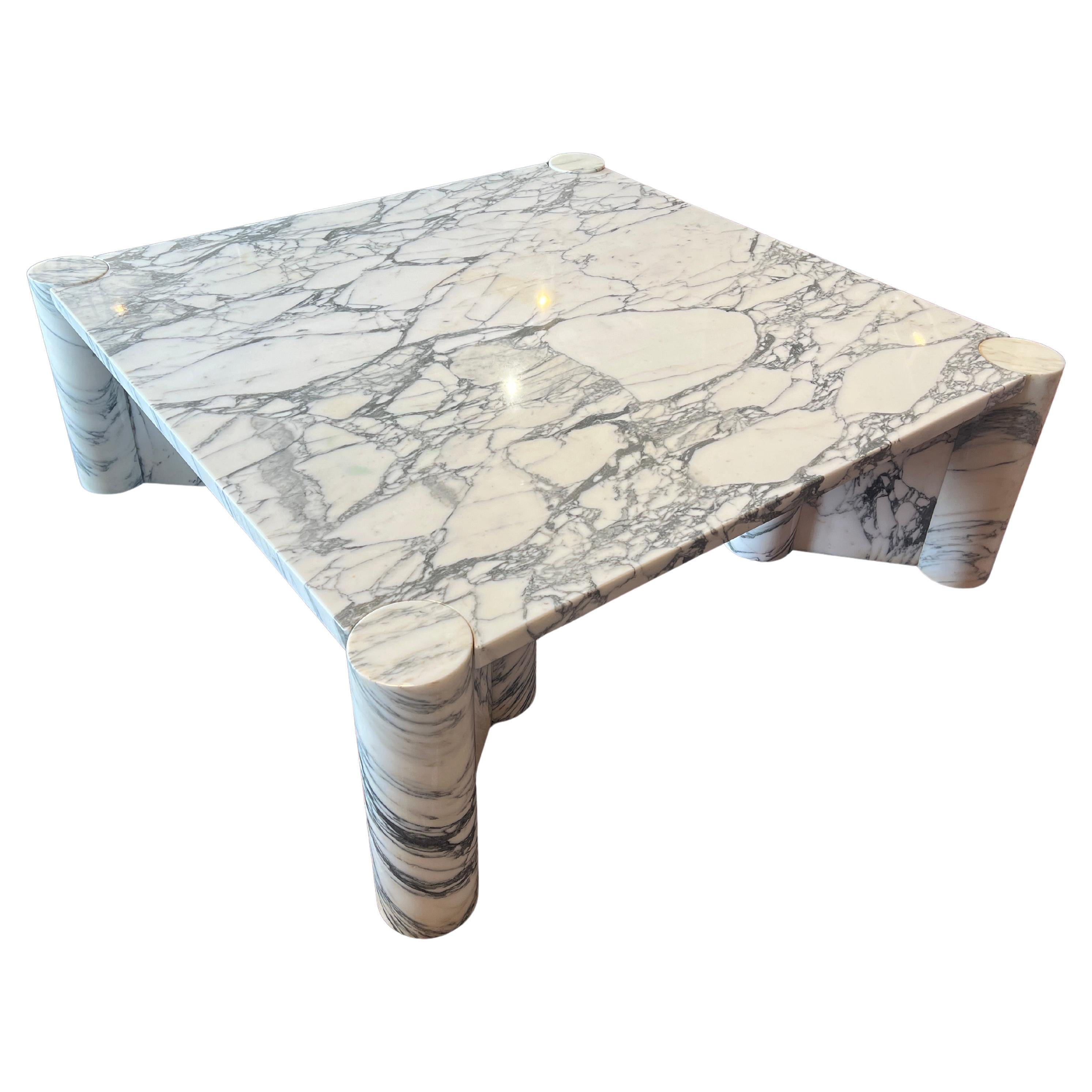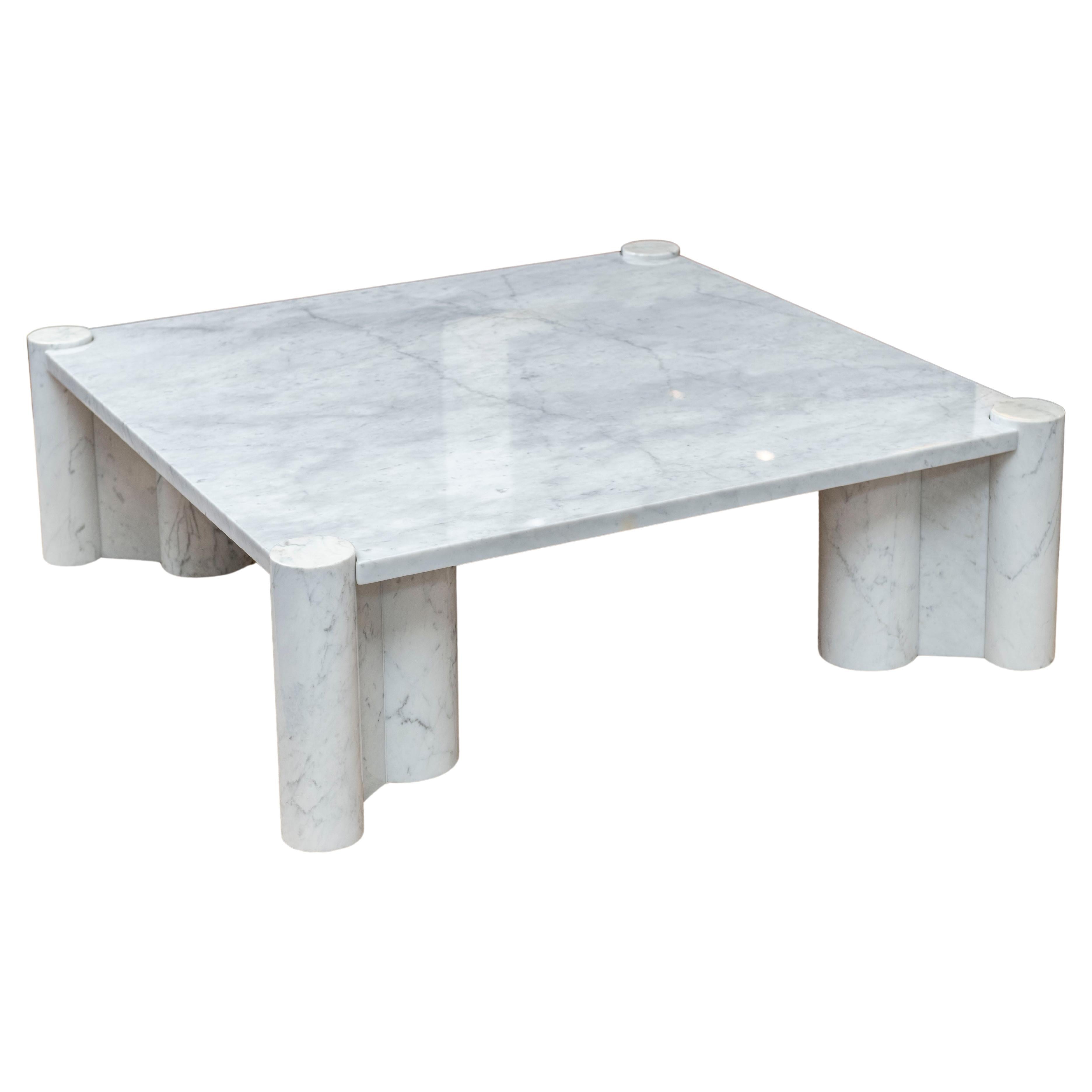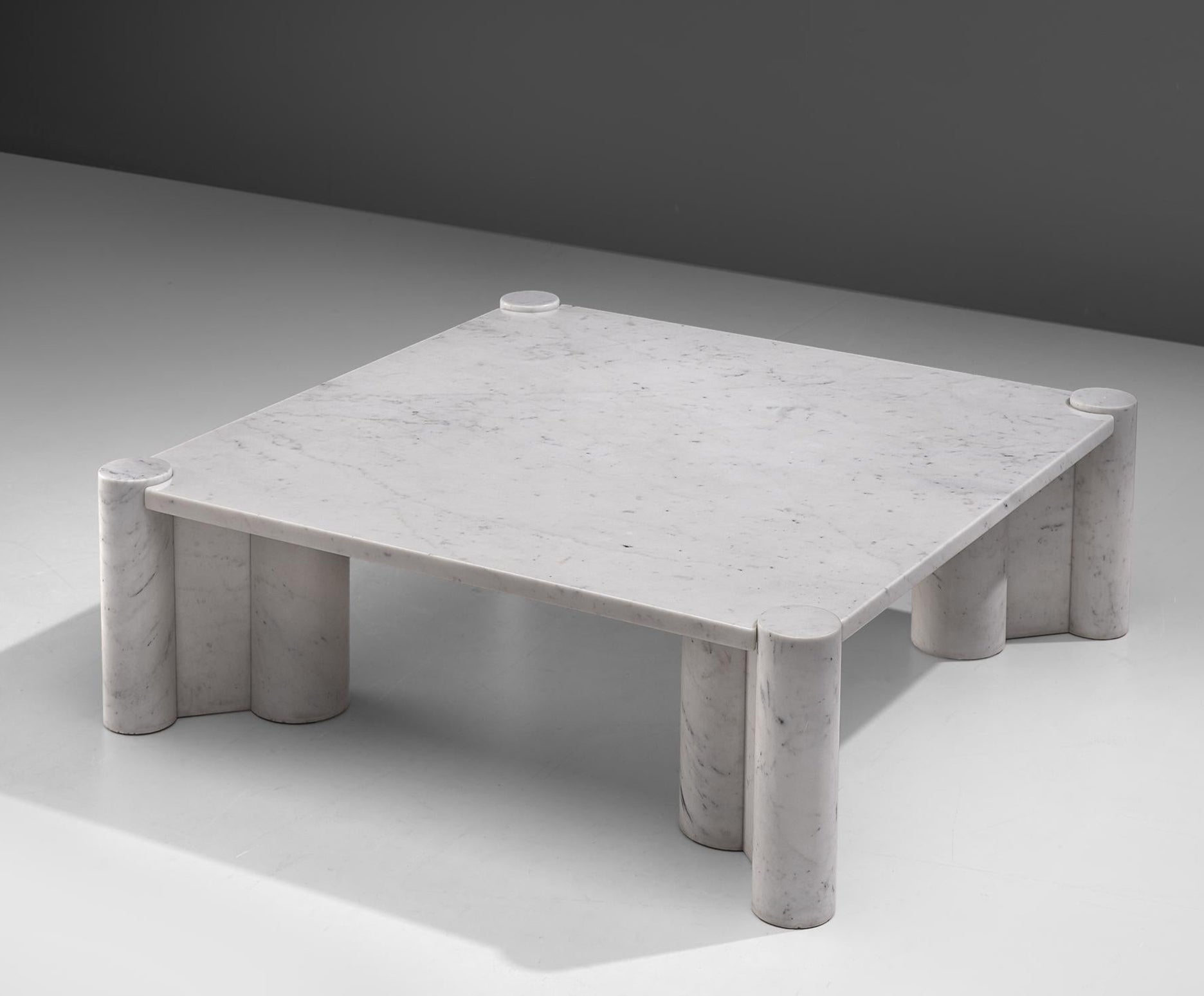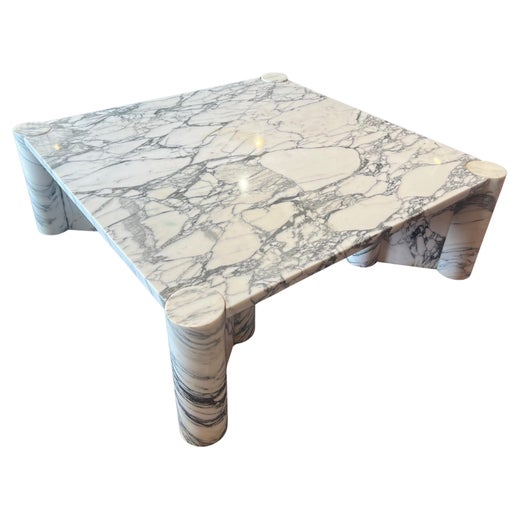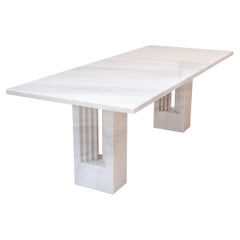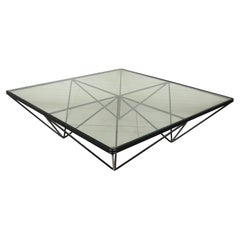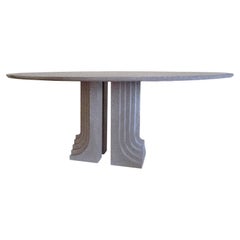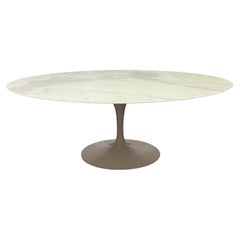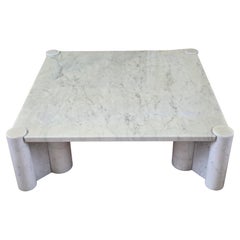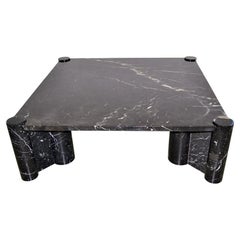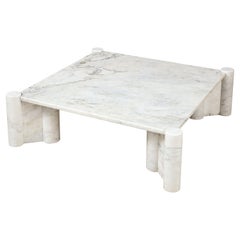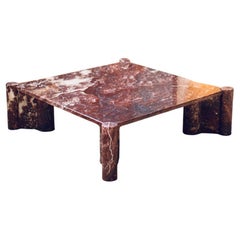Gae Aulenti Space Age Marble Jumbo Coffee Table for Knoll International, 1969
About the Item
- Creator:Knoll (Manufacturer),Gae Aulenti (Designer)
- Design:
- Dimensions:Height: 14.18 in (36 cm)Width: 45.67 in (116 cm)Depth: 45.67 in (116 cm)
- Style:Mid-Century Modern (Of the Period)
- Materials and Techniques:
- Place of Origin:
- Period:
- Date of Manufacture:1969
- Condition:Minor fading.
- Seller Location:Vicenza, IT
- Reference Number:1stDibs: LU8019234214312
Jumbo Coffee Table
The Jumbo coffee table was more than just a piece of furniture to Gae Aulenti (1927–2012). As a participant in Italy’s Neo-Liberty movement in the late 1950s, she rejected the omnipresent Bauhaus modernist aesthetic and instead chose to create pieces that exemplified her taste for classical design with a modern edge.
The Jumbo coffee table, with its opulent marble top and sculpted column legs, epitomized Aulenti's approach. Weighing nearly 450 pounds, the table is unquestionably heavy yet it still maintains a graceful air that hearkens back to her adoration for classic Roman architecture. This is a seductive characteristic of her late-career architectural projects, too, such as her conversion of a train station to the Musée d’Orsay — home to one of the world's most important Impressionist art collections — as well as the renovation of Venice’s Palazzo Grassi into an exhibition space.
In 1954, decades before she transformed a Paris landmark transit hub into a museum, Aulenti graduated from the Polytechnic University of Milan as one of only two women in her class. She became known for her industrial design work and as a vocal advocate for rejecting postwar Italian architecture. Gianni Agnelli, the chairman of Fiat, was impressed with her passion and commissioned her to design his company’s showrooms in Turin, Zurich and Brussels. Aulenti’s work for Fiat yielded another design opportunity, this time, at Knoll, where she designed the company’s showrooms in Boston and New York City.
In 1972, Knoll began to manufacture the Jumbo coffee table, which Aulenti initially designed in 1965. The company made her table available in three marble finishes: Calacatta, Carrara and Nero Marquina.
Gae Aulenti
The Italian architect and designer Gae Aulenti will forever be best remembered for her work with museums, in particular her 1980–86 renovation of a Beaux Arts Paris train station to create the galleries of the Musée d’Orsay. Aulenti — whose first name, short for Gaetana, is pronounced “guy” — should also be recalled for her tough intellectual spirit and for working steadily when few women found successful architectural careers in postwar Italy.
After she graduated from the Milan Polytechic in 1954, Aulenti opened an architectural office. She also joined the staff of the progressive architectural magazine Casabella, whose editorial line was that the establishment, orthodox modernism of Le Corbusier and the Bauhaus, had outlived it usefulness. When their movement for fresh approaches to architecture and design received a sympathetic hearing, Aulenti found patrons — most prominently Gianni Agnelli, of Fiat, who later employed her to renovate the Palazzo Grassi in Venice for use as an arts exhibition space.
Commissions for showrooms and other corporate spaces brought Aulenti to furniture design. She felt that furniture should never dominate a room. Her chairs and sofas — low-slung, with rounded enameled metal frames and ample seats — and tables, particularly her 1972 marble Jumbo coffee table for Knoll, project solidity and sturdiness. In lighting design, however, Aulenti is bravura.
Each work has a marvelous sculptural presence. Pieces such as her Pipistrello table lamp and Quadrifoglio pendant are a perfect marriage of organically shaped glass and high-tech fixtures. Others have a futuristic elegance — and some even have a touch of personality. Aulenti’s Pileino and La Ruspa table lamps each look almost like little robots. Her lighting pieces are an artful grace note in the career of a woman who believed in strength.
Find vintage Gae Aulenti armchairs, coffee tables and other furniture on 1stDibs.
- ShippingRetrieving quote...Shipping from: Vicenza, Italy
- Return Policy
More From This Seller
View AllVintage 1960s Italian Mid-Century Modern Dining Room Tables
Marble
Vintage 1980s Italian Industrial Coffee and Cocktail Tables
Steel
Vintage 1970s Italian Mid-Century Modern Dining Room Tables
Granite
Vintage 1960s Italian Space Age Dining Room Tables
Carrara Marble
Vintage 1970s Italian Brutalist Side Tables
Marble, Carrara Marble
Vintage 1960s Italian Mid-Century Modern Dining Room Tables
Walnut
You May Also Like
Vintage 1970s Italian Mid-Century Modern Coffee and Cocktail Tables
Marble, Carrara Marble
Mid-20th Century Italian Modern Coffee and Cocktail Tables
Marble
Vintage 1960s Italian Mid-Century Modern Coffee and Cocktail Tables
Carrara Marble
Vintage 1970s Italian Mid-Century Modern Coffee and Cocktail Tables
Marble
Mid-20th Century Italian Mid-Century Modern Coffee and Cocktail Tables
Marble
1990s Italian Mid-Century Modern Coffee and Cocktail Tables
Carrara Marble
